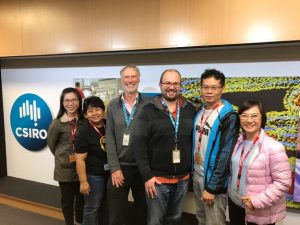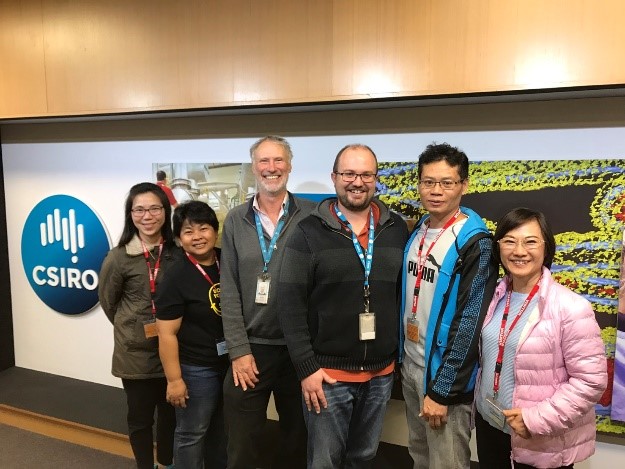Authors: Dr Anthony Keyburn (CSIRO AAHL), Dr Sam Abraham and Ihab Habib (Murdoch University)

The Australian livestock sector, including Poultry, can be happy with the current state of play when it comes to antimicrobial resistance (AMR) bacteria (Superbugs). Recent surveys have shown that the industry has a comparatively low incidence of resistance to last line drugs used to treat severe infections in humans (Sam Abraham et al., 2015, Barlow et al., 2015 , Abraham et al., 2014, Pande et al., 2015). This is attributed to Australia’s geography, ban on the importation of specific livestock and certain meat products and restriction on the use of last line antimicrobial’s.
However, more can be done to ensure the Australian industry does not lose the bragging rights over others and should remain vigilant or risk a rise in resistance. Recent studies have reported the detection of last-line antimicrobial resistant E. coli in an off-shore colony of seagulls in NSW (Dolejska et al., 2016) and Salmonella in a cat with no history of last-line antimicrobial use (Abraham et al., 2016)
Expansion of alternative farming namely free range in both egg and meat production may increase the risk of exposure to bugs that are resistant to antibiotics irrespective of if drugs are used on the property. The risk can come from feral and wild animals or birds and human interactions. Environmental pollutants like metal cations especially Copper and Zinc have been linked to bacterial antibiotic resistance development in nature (Pal et al., 2017). Some part of the drug resistance in these cases comes from the co-localization of metal resistance and drug resistant genes on the same mobile element. In fact, copper resistance genes are more common amongst drug resistant bacteria vs. non-drug resistant isolates (Mourao et.al., 2015). Also, humans can play a role in the exposure of drug resistant bacteria to livestock especially those who have travelled or consumed contaminated food from endemic areas.
This is an area where active involvement in surveillance and effective communication and collaboration plays a major role in knowing what is circulating within the Asia-Pacific region. As part of an OIE Twinning Project between the National Institute of Animal Health in Bangkok, Thailand and the CSIRO Australian Animal Health Laboratory, in collaboration with Murdoch University we are involved in training and undertaking surveillance projects looking at drug resistant bacteria isolates from pigs and poultry. The projects are looking at isolates from the farms and the surrounding environment to gain insight on what resistant bacteria are circulating in specific regions of Thailand and more importantly what gene(s) are being carried and/or exchanged between different bacteria. This information will help inform both countries about the presence and movement of drug resistant bacteria and help aid in the development of new diagnostic tests. The result of these types of projects will also help inform discussions in antimicrobial stewardship programs and lead to changes in practices and policies for both countries.
References
ABRAHAM, S., GROVES, M. D., TROTT, D. J., CHAPMAN, T. A., TURNER, B., HORNITZKY, M. & JORDAN, D. 2014. Salmonella enterica isolated from infections in Australian livestock remain susceptible to critical antimicrobials. Int J Antimicrob Agents, 43, 126-130.
ABRAHAM, S., O’DEA, M., TROTT, D. J., ABRAHAM, R. J., HUGHES, D., PANG, S., MCKEW, G., CHEONG, E. Y. L., MERLINO, J., SAPUTRA, S., MALIK, R. & GOTTLIEB, T. 2016. Isolation and plasmid characterization of carbapenemase (IMP-4) producing Salmonella enterica Typhimurium from cats. Sci Rep, 6, 35527.
BARLOW, R., MCMILLAN, K., DUFFY, L., FEGAN, N., JORDAN, D. & MELLOR, G. E. 2015 Prevalence and Antimicrobial Resistance of Salmonella and Escherichia coli from Australian Cattle Populations at Slaughter. J Food Protection 78, 912-920.
DOLEJSKA, M., MASARIKOVA, M., DOBIASOVA, H., JAMBOROVA, I., KARPISKOVA, R., HAVLICEK, M., CARLILE, N., PRIDDEL, D., CIZEK, A. & LITERAK, I. 2016. High prevalence of Salmonella and IMP-4-producing Enterobacteriaceae in the silver gull on Five Islands, Australia. Journal of Antimicrobial Chemotherapy, 71, 63-70.
MOURAO, J., NOVAIS, C. MACHADO, J., PEIXE, L., ANTUNES, P. Metal tolerance in emerging relevant multidrug-resistant Salmonella enterica serotype 4,[5],12:i- clones circulating in Europe. International Journal of Antimicrobial Agents. 45, 610-616.
PAL, C., Asiani, K., Arya, S., Rensing, C., Stekel, D. J., Larsson, D. G. J., HOBMAN, J. L. Metal resistance and its association with antibiotic resistance. Advances in microbial physiology, 70, 261-313.
PANDE, V., GOLE, V., MCWHORTER, A. R., ABRAHAM, S. & CHOUSALKAR, K. K. 2015. Antimicrobial resistance of non-typhoidal Salmonella isolates from egg layer flocks and egg shells. International Journal of Food Microbiology, 16, 23-26.
SAM ABRAHAM, DAVID JORDAN, HUI S. WONG, JAMES R. JOHNSON, DAVID GORDON, DAVID L. WAKEHAM, JOHN D. TURNIDGE, JOANNE L.MOLLINGER, JUSTINE S. GIBSON & DARREN J. TROTT. First detection of extended-spectrum cephalosporin and fluoroquinolone-resistant pathogenic Escherichia coli in Australian food-producing animals, representing internationally disseminated, multidrug-resistant zooanthroponotic clonal lineages. Australian Society for Antimicrobials Annual Scientific Conference, Antimicrobials 2015, 2015 Brisbane. 273-277.


